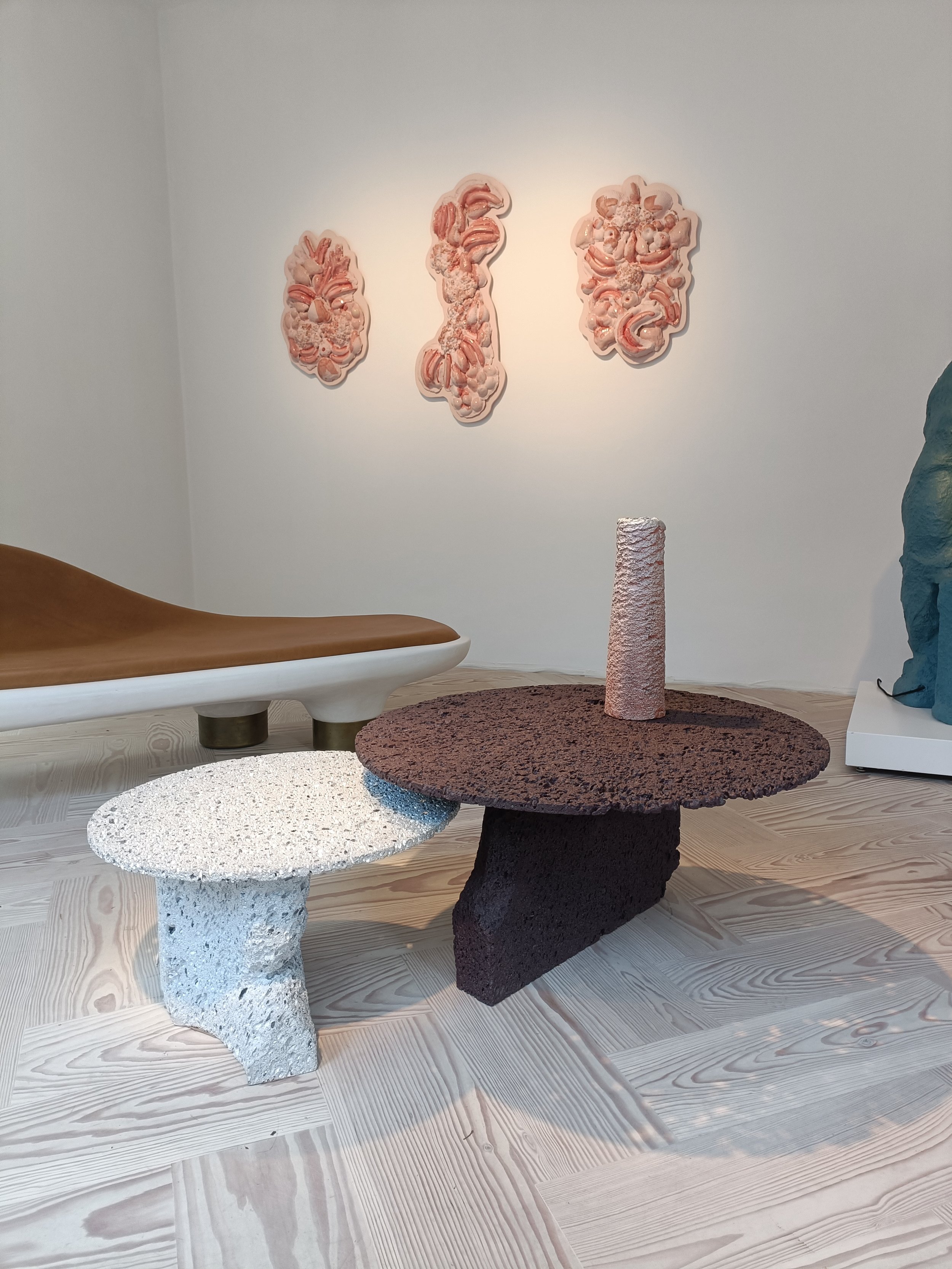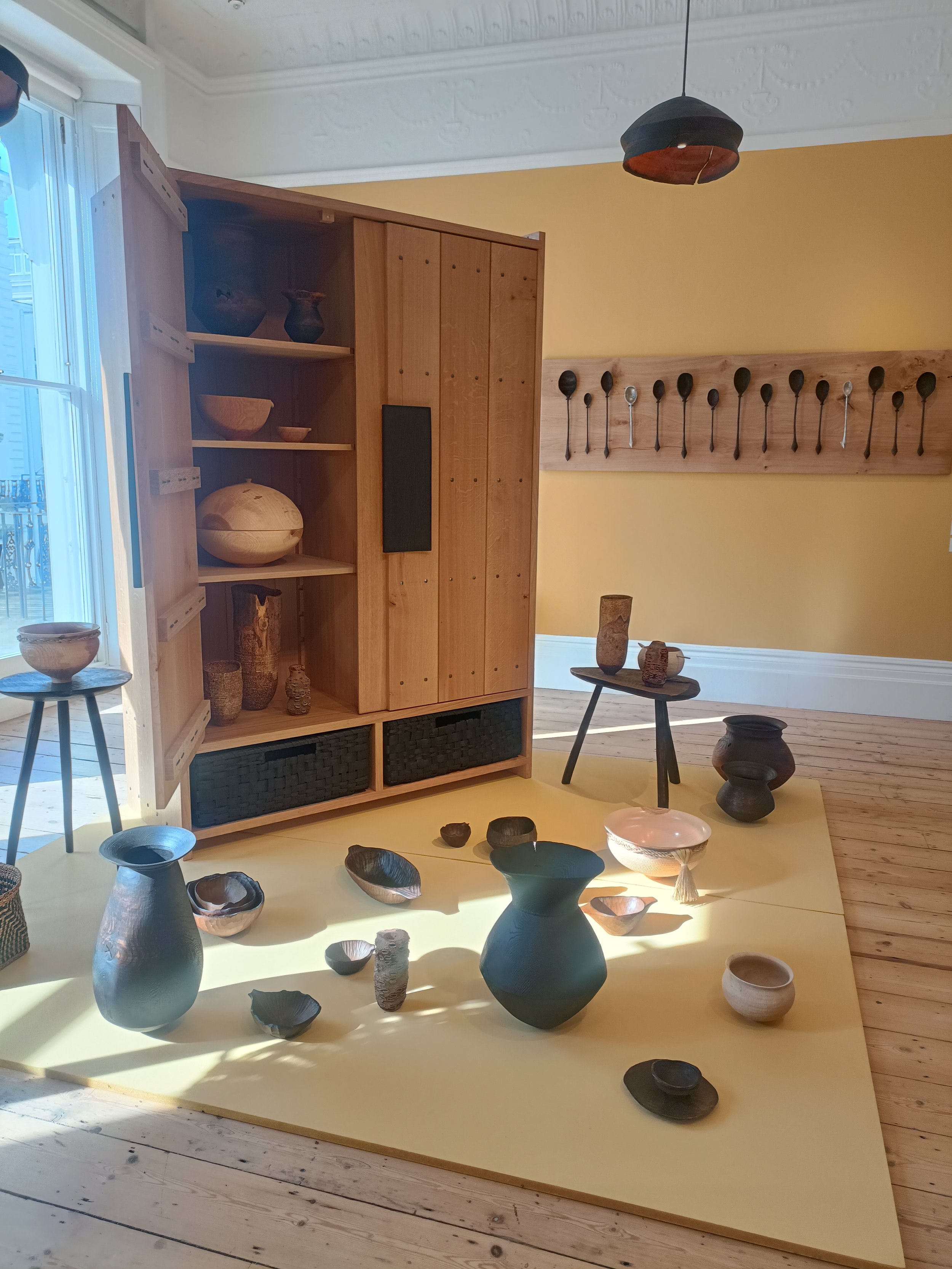A Textural Festival
With that back-to-school zest hanging in the fresh, crisp autumnal air, and golden leaves beginning to crunch underfoot, the end of September signals a noticeable shift of energy and expectation. Having initially opened in March some 20 years ago, the London Design Festival returned to its now well-established September slot and oozed with creativity and vitality in a manner befitting of the abundant season. This year it encapsulated 13 design districts from Bankside to Battersea, Shoreditch to Southwark, and everywhere else in between. Exhibitions, events, talks and workshops popped up across the city, bringing with it an international audience. As ever the event not only showcased a rich mix of design but also a time to reflect on the fullness of the year that has been as well as offering a chance to look hopefully toward the future. Even after 2 decades, its presence within the annual international design calendar is still weighty, and as director Ben Evans points out this year's edition arrived, “at an important moment when bringing people together through creativity and design matters more than ever.”
Highlights of this year’s event were plentiful, but one common thread running throughout was the rich mix of texturally specific pieces that haptically engaged the senses. Perhaps it’s a result of the lockdown periods and the enforced hands-off approach during those times, but judging by the work on display, it seems that designers are keen to explore, play with, and even exaggerate the texture of the objects and products they make.
Studio Furthermore, who were previously featured in our Making of Ceramics film, featured in Charles Burnand Gallery’s exhibition Planet Rock, which was inspired by their Moon Rock surfaces and the notion that the duo will soon make a trip to space to excavate on the moon. While rich in conceptual narrative the surface of the pitted material, which forms tables of various shapes and sizes, is also loaded with haptic detail. Formed from both ceramic and aluminum, the collection utilises a lost foam casting process, which crystallises the holed structure of the ordinarily soft and spongy foam.
Further blurring of the boundaries between design, art and craft were on display throughout the showing, not least via Heechan Kim’s wooden structure, which had its own alien qualities while simultaneously feeling familiar in form. The curved untitled object is impressively crafted from slim sections of wood veneer that are joined by small twists of wire. As such, the overall shape has an inside and outside, both of which vary in their texture, and evoke fruit, shells and perhaps even the valve of a heart.
Sarah Myerscough Gallery celebrated its silver jubilee with the Collections exhibition, which brought together sumptuously crafted works by an array of artists and designers represented by the gallery during its 25-year period. Once again, form and texture tended to follow material properties, with a number of the works displaying almost primordial qualities. Raw stoneware and ceramic featured from the likes of Aneta Regel and Luke Fuller but wood, the gallery's first love, shone through the brightest and offered a unique variety of textures. Sculptor Nic Webb combines traditional craft skills with less conventional and experimental techniques, which was demonstrated with the Oku light and table. While awe-inspiring due to the sheer scale of the pieces alone, both objects possess a beguiling mix of raw and smooth textures across the curbed forms, which are created through the attritional process of sand blasting.
Striking with the craft of wood, The New Craftsman presented Join, Assemble, Hold, a mix of works in timber centred around 2 cabinets that exuded their own unique character. Once again, texture came to the fore, creating a subtle connection to all the works on display. Pieces by the likes of Max Bainbridge, Studio AMOS and Ash & Plumb filled and surrounded the Nailed Pantry by Bibbings & Hensby, all of which celebrating the natural tactility of the material.
Lathe-turned vessels and hand-carved spoons adorned the space along with green wood-worked and woven willow pendant lights. Bainbridges’s turned vessels and open forms in particular showed how the materials can be processed to create smooth and rather delicate textures, working with the natural grain to emphasize shape and create uncommonly thin wooden structures.
Nestled within the exhibition stood a raw timber frame onto which numerous woven baskets had been attached, drawing attention to and celebrating a range of endangered basketry techniques. Designers including Clare Revera, Michelle Mateo, Hillary Burns and Joe Hogan were invited to creatively interpret heritage skills that are unique to British Isles using materials that have been pushed to the brink of extinction in the UK, not least, Willow, Ash and Hazel.
While a less traditional but equally fetching texture caught the eye over at Mint’s new home in Mayfair, courtesy of ceramicist Pamela Pudan. The blobbed, alien-like forms would not have seemed out of place in the Planet Rock exhibition and certainly defied ones usual expectations of the medium. As the designer explains though, abnormality is key, “I am interested in exploring anomaly and the place that it has in our society - how it can occupy its own space, affirm its own existence, claim its own beauty.” The complex pieces are made using pinch and press moulding techniques, and while they feel like they could almost be inspired by natural formations, they are very deliberately made in a way that rubs against natural growing patterns. Not only do the overal rises and falls of the scouped shapes create a textural quality, so too does the abrasive micro-texture found upon the surface itself.
Texture it seems is well and truly back and a reminder that tactility comes in many alluring forms that add a richness to our experience of the world that surrounds us.








